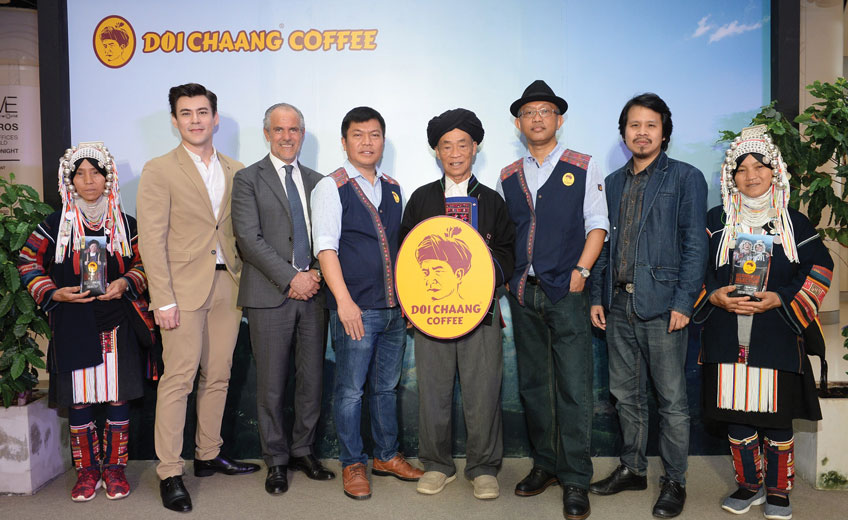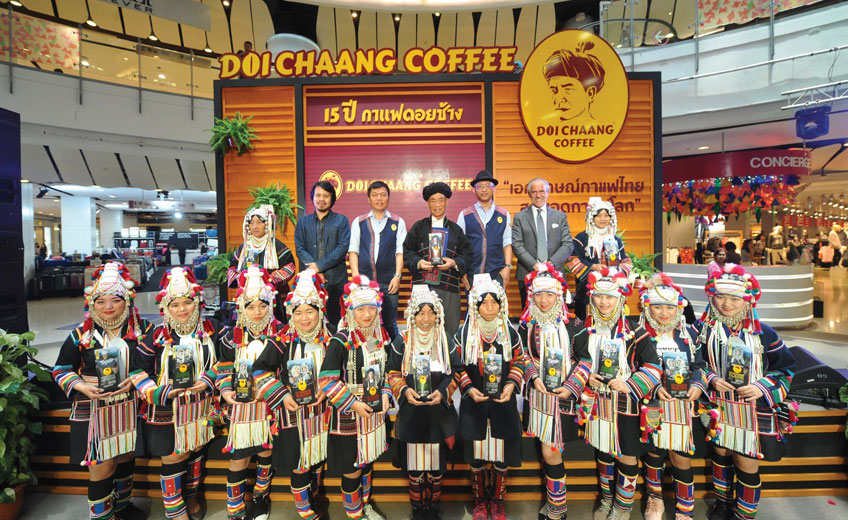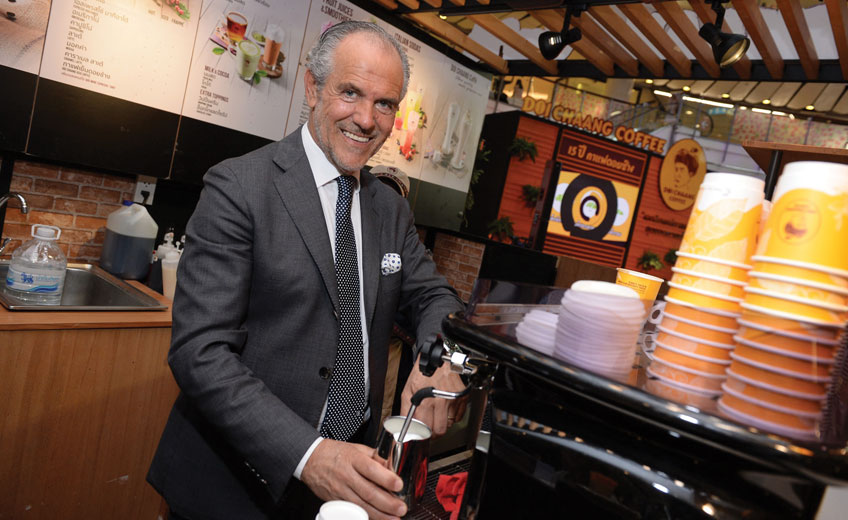From hand-poured rosettas and crazy rainbow-coloured milk foam to selfies printed on the surface of your cappuccino – the art of creating intricate designs on top of a milky beverage seems to know no boundaries. Latte art has elevated our daily dose of caffeine into a blank canvas on which skilful baristas showcase their creativity via the medium of foamed milk, inspiring coffee aficionados worldwide and taking over our Instagram feeds.
But who invented latte art? While its origins are unknown, I had the opportunity to talk to one of its pioneers at a recent event organized by Doi Chaang. Commemorating the premium coffee brand’s 15th anniversary, the event welcomed world-renowned barista Luigi Lupi. Considered the father of latte art, the Italian coffee connoisseur developed an interest in the delectable bean in Venezuela where he first experienced “real coffee culture”, before opening his first coffee shop in Italy. “What is the best country for coffee culture?” he asks. “Everybody thinks of Italy, but that’s not correct.
Italy is so popular because we invented the espresso coffee machine, but we don’t grow coffee in Italy. The best countries for coffee culture is at its source.” After being inspired by a friend who was able to create basic latte designs, Luigi spent years improving and perfecting his craft before entering the World Barista Championship in 2002. Impressing the audience, judges and organizers alike with his unique take on coffee preparation, he was consequently invited around the world, introducing latte art on an international scale. “I was lucky because having the skills to do good latte art at the time meant that I was unique,” Luigi reflects.
Today he acts as a trainer and certifier of the Speciality Coffee Association of Europe (SCAE), a comprehensive, international programme offering courses in a variety of barista skills and co-founded by the Latte Art Grading System (LAGS), a series of qualifications that assesses the creativity and technical skills of baristas in latte art.
The foundation for the increasing influence of latte art on the coffee industry is the fact that the majority of coffee drinkers worldwide enjoy their brews with milk, with Italy being an interesting exception. “In Italy it is completely different because we drink espresso, while the rest of the world, around 90 per cent, drink coffee with milk,” Luigi explains. Another, more obvious, reason for its popularity is simple; it looks beautiful and provides a “wow” effect – abetted by our use of social media and the search for something fresh and aesthetically pleasing.
Comparable to a thoughtfully plated dish, we also drink with our eyes. “The first step is to look. People prefer to eat and drink if it’s beautiful. Why do you prefer to drink from a nice ceramic cup instead of a paper one?” the barista remarks. In fact, an article in the Journal of Sensory Studies revealed that the presence of latte art influences customers’ expectation of the value and quality of the beverage and suggests that people are willing to pay between 11-13 per cent more for coffee adorned with milky flourishes.
As tea consumption decreases and the number of coffee consumers goes up thanks to milk mixed beverages, Luigi doesn’t believe latte art is just a fading hipster craze. “It’s not only a trend, but has improved a lot and is here to stay.”
Originally founded by the SCAE and SCAA (Specialty Coffee Association of America), the first World Latte Art Championship, now a yearly competition where contestants show off their skilful designs, was in 2006. During these annual showcases, only hand-made – aka free-pour – creations, in which the barista creates a design by pouring frothy milk on top of an espresso, are classed as “real” latte art. Other techniques include drawing or etching patterns with tools such as a coffee stirrer or 3D coffee printer, a machine that uses edible ink to copy any image on top of frothy milk.


While latte art is ubiquitous worldwide, it’s especially popular in Asia, Luigi continues, with most of the champions and best baristas nowadays coming from this region, including Thai representative Arnon Thitiprasert, winning the 2017 Latte Art competition. Despite his passion and enthusiasm, Luigi doesn’t consider it an art form. “It’s not art and you don’t necessarily have to be an artist. Latte art is a technique. You can train, take courses. You can understand the technique and become a good painter but that does not make you an artist. The artist is somebody who invents.” The only person he would ascribe the term artist to is Um Paul from South Korea. As one of his former students, he won the Latte Art Championship in 2016.
However, being able to create latte art doesn’t necessarily turn you into a good barista. Luigi stresses the importance of understanding coffee – from growing and harvesting to roasting, grinding and preparing. In order to become a good barista, it’s necessary to understand how the coffee grows; how to grind it, what water to use, which type of coffee bean and, most importantly, have passion to study, practise and improve. “The barista must transform. It’s like food and depends on how you work with the ingredients. To make good coffee you need to follow small details. It’s not just about pushing a button. Then latte art is something more.”
So while latte art might not have any influence on coffee itself, it’s little details like this that help add something beautiful, and might even trigger a smile, into our everyday busy lives.




















































































































































































































































































































































































































































































































































































































































































































































































































